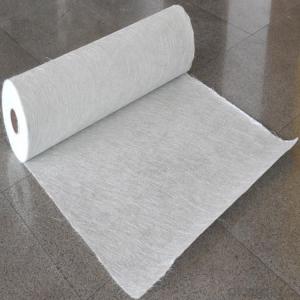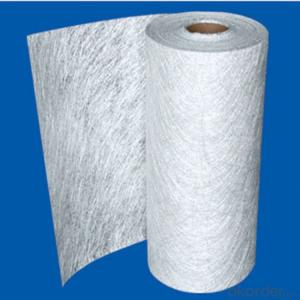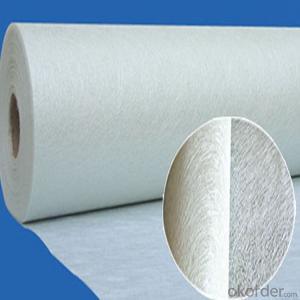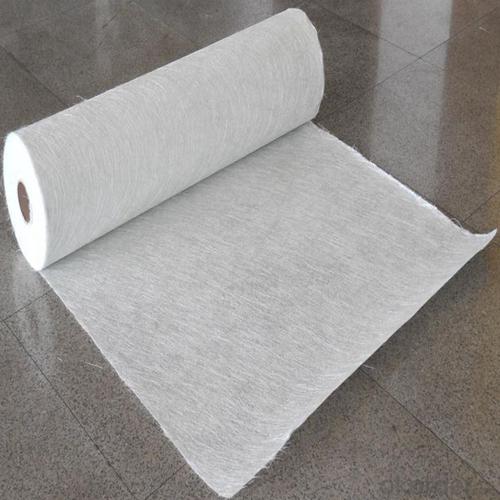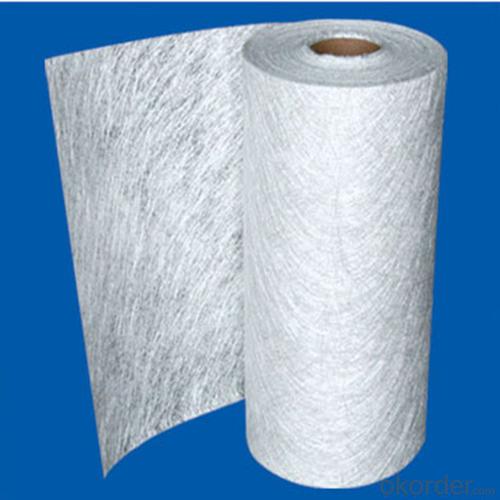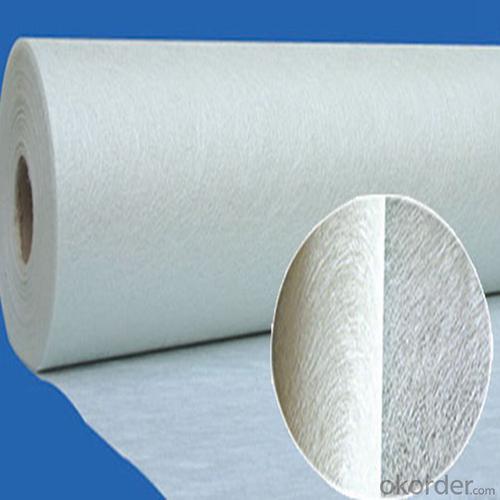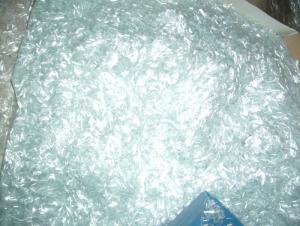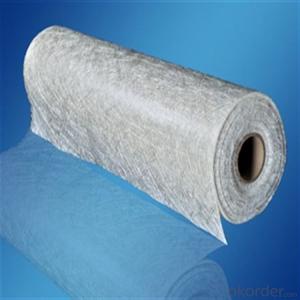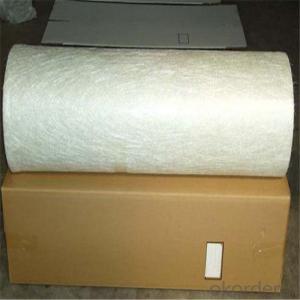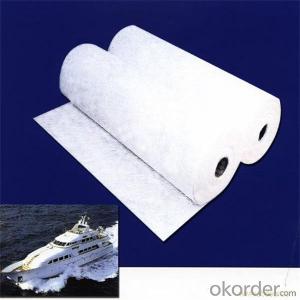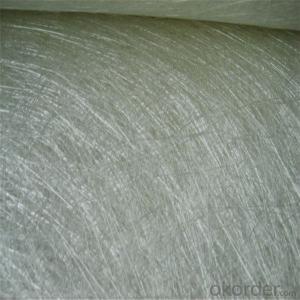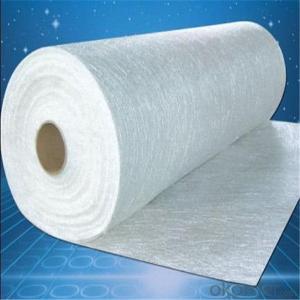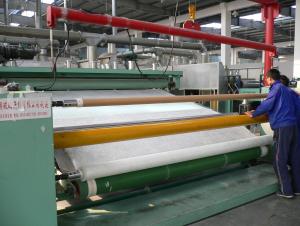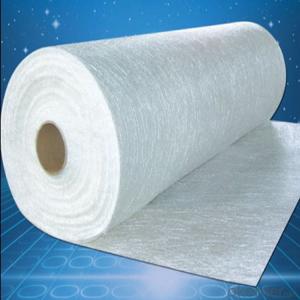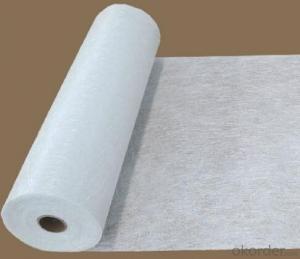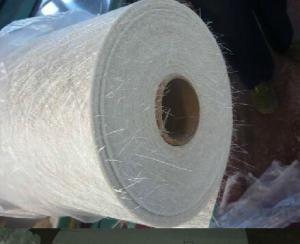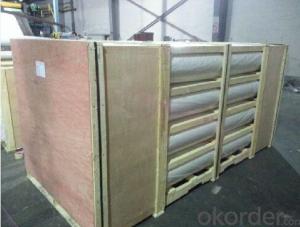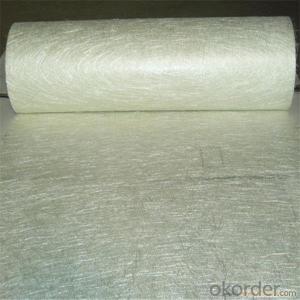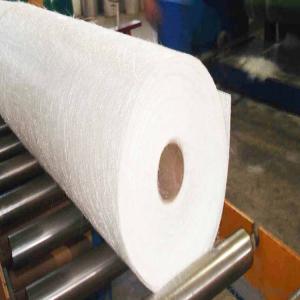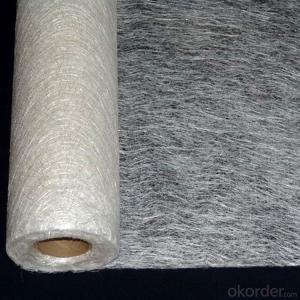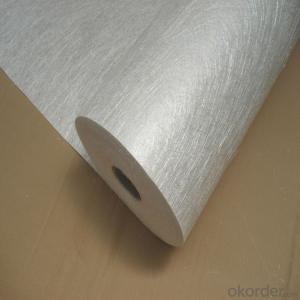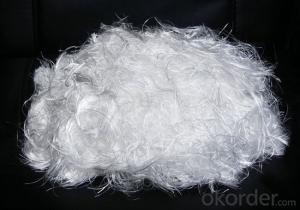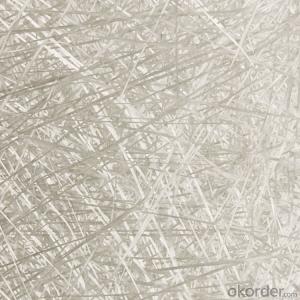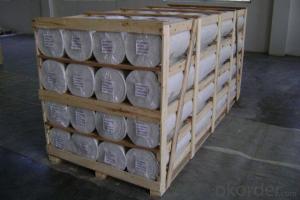Fiberglass Chopped Strand Mat 1040mm Fiberglass Emulsion Thickness
- Loading Port:
- China main port
- Payment Terms:
- TT OR LC
- Min Order Qty:
- 1 kg
- Supply Capability:
- 5000 kg/month
OKorder Service Pledge
OKorder Financial Service
You Might Also Like
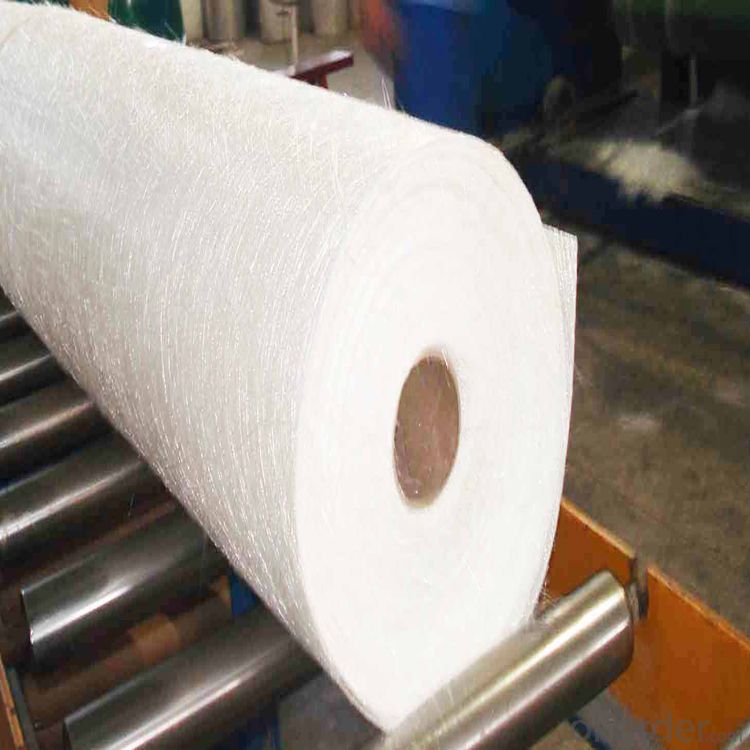
Product Description:
Chopped strand mat is made from chopped glass fibers, which are bonded with powder or emulsion binders. It can be used in hand lay-up process and continuous laminating process to produce FRP products, such as plates, lighting board, hull, bathtub, cooling towers, anti-corrosion materials, vehicles.
Specifications:
Item | Over Density | Moisture Content | Chop Density | Polyester Yarn | Width |
(g/m2) | (%) | (g/m2) | (g/m2) | (mm) | |
EMK300 | 309.5 | ≤0.15 | 300 | 9.5 | 50-3300 |
EMK380 | 399 | 380 | 19 | ||
EMK450 | 459.5 | 450 | 9.5 | ||
EMK450 | 469 | 450 | 19 | ||
EMC0020 | 620.9 | 601.9 | 19 | ||
EMC0030 | 909.5 | 900 | 9.5 |
Special products are available according to customer’s requirement.
Product Packaging:
Each Surface Tissue is wound onto a paper tube which has an inside diameter of 76mm and the mat roll has a diameter of 330mm. The mat roll is wrapped up with plastic film,and then packed in a cardboard box or wrapped up with kraft paper. The rolls can be vertically or horizontally placed. For transportation, the rolls can be loaded into a cantainer directly or on pallets.
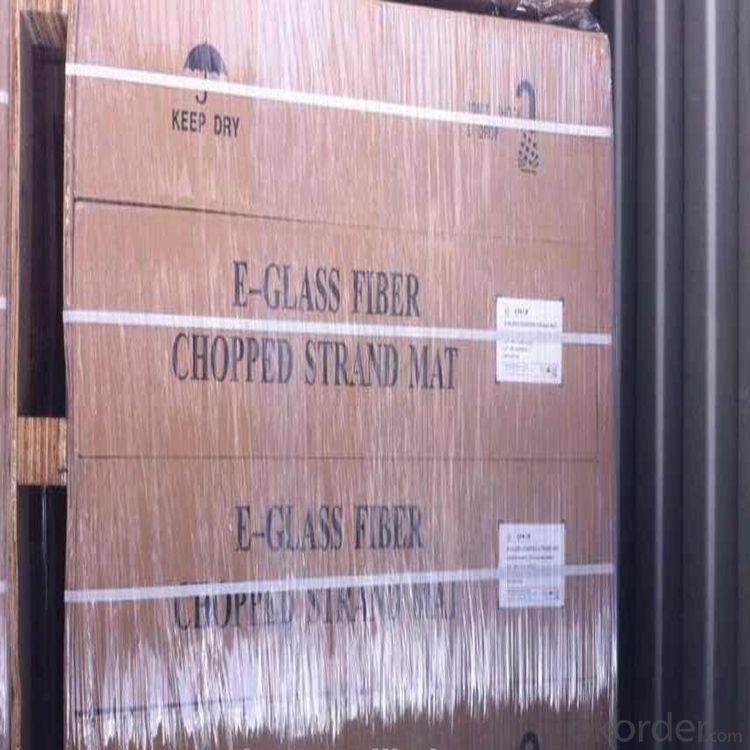
Product Storage:
Unless otherwise specified, Chopped Strand Mat should be stored in a dry, cool and rain-proof area. It is recommended that the room temperature and humidity should be always maintained at 15℃~35℃ and 50%~75% respectively.
Company Information
CNBM (China National Building Material) Group is the largest comprehensive building materials group in China that in integrate scientific research, manufacturing and logistics into one entity. The largest building materials and equipment specialists in China. Upon State Council approval, today CNBM owned more than 300 subordinate manufacturing factories and servicing companies. There are 6 fully owned public listed companies and 11 partially owned with substantial shares public listed companies. In many of these fields, CNBM is playing the leading role in the building industry in the country.
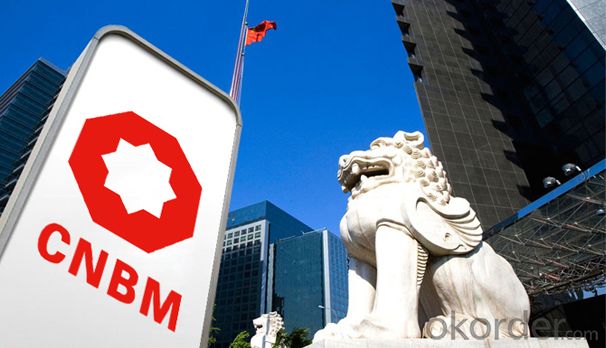
FAQ:
which kind of glass fiber sample and materials can you provide?
We can provide the glass fiber and glass fiber down stream products samples of E glass, C glass, ECR glass, High alkali glass. The products includes single end roving, assembled roving for different applications( Piping, SMC, panel, winding mill plate) , chop strand for BMC, engineering plastic (PA, PPA, PPT, POM, etc), chop strand mat (from 100gsm-900gsm) for automobile and water tank, etc, woven roving (270gsm-800gsm), surface tissue (25-50gsm), multi-axial fabric of different unit weight.
- Q: Is fiberglass chopped strand suitable for water tanks?
- Yes, fiberglass chopped strand is suitable for water tanks. It is a commonly used material in the construction of water tanks due to its excellent corrosion resistance, high strength-to-weight ratio, and durability. Additionally, fiberglass chopped strand offers good dimensional stability and is resistant to chemicals, making it a reliable choice for water containment applications.
- Q: How does the diameter-to-length ratio of fiberglass chopped strand affect its performance?
- The diameter-to-length ratio of fiberglass chopped strand plays a significant role in determining its performance. The diameter of the strands affects the overall strength and stiffness of the material, while the length influences its ability to disperse and reinforce the matrix. A higher diameter-to-length ratio typically results in improved mechanical properties. This is because a larger diameter contributes to a higher surface area and better interfacial bonding with the matrix material. Consequently, the fiberglass strands can transfer stress more efficiently, enhancing the overall strength and load-bearing capacity of the composite. Additionally, a higher diameter-to-length ratio allows for better dispersion of the chopped strands within the matrix. Longer strands tend to agglomerate or entangle, making it difficult to achieve a homogeneous distribution in the composite. With a higher diameter, the strands can separate more easily, leading to improved reinforcement throughout the material. However, it is important to note that the optimal diameter-to-length ratio depends on the specific application and the desired performance characteristics. In some cases, shorter strands with a lower diameter-to-length ratio may be preferred, such as in applications where impact resistance or improved surface finish is crucial. In summary, the diameter-to-length ratio of fiberglass chopped strand significantly impacts its performance. A higher ratio generally leads to improved mechanical properties and better dispersion, enhancing the overall strength and reinforcement capabilities of the composite. However, the ideal ratio may vary depending on the specific application requirements.
- Q: Is fiberglass chopped strand suitable for the production of playground equipment?
- Yes, fiberglass chopped strand is suitable for the production of playground equipment. It offers excellent strength, durability, and resistance to harsh weather conditions, making it a reliable material choice for playground structures. Additionally, fiberglass chopped strand can be easily molded into various shapes and designs, providing flexibility in creating customized playground equipment.
- Q: Can fiberglass chopped strand be used in water treatment applications?
- Indeed, water treatment applications can make use of fiberglass chopped strand. With its exceptional resistance to corrosion and chemicals, fiberglass proves to be a versatile material perfectly suited for water treatment procedures. Employing chopped strands of fiberglass allows for the reinforcement of multiple components, including pipes, tanks, and filters, which are essential in water treatment systems. The remarkable strength and durability of fiberglass render it highly capable of enduring the challenging conditions commonly encountered in water treatment facilities. Furthermore, fiberglass is non-toxic and does not release any detrimental substances into the water, guaranteeing the safety of the treated water supply.
- Q: How is fiberglass chopped strand used in the wind energy sector?
- Fiberglass chopped strand is commonly used in the wind energy sector for reinforcing and strengthening composite materials used in wind turbine blades. It is mixed with resins and other additives to create a strong and lightweight composite material, which is then molded into the desired blade shape. The chopped strand provides excellent tensile strength and stiffness to the composite, making it ideal for withstanding the dynamic loads and harsh environmental conditions experienced by wind turbine blades.
- Q: Can fiberglass chopped strand be used for reinforcing concrete?
- Yes, fiberglass chopped strand can be used for reinforcing concrete. Fiberglass chopped strand is a type of reinforcement made from strands of glass fibers that are chopped into short lengths and added to the concrete mixture. These fibers enhance the overall strength, durability, and crack resistance of the concrete. They also help to control shrinkage and reduce the formation of cracks. Fiberglass chopped strand is lightweight, corrosion-resistant, and offers excellent performance in harsh environments. It is commonly used in applications such as concrete slabs, walls, precast elements, and shotcrete.
- Q: How does the curing time of fiberglass chopped strand-reinforced composites compare to other reinforcing materials?
- Fiberglass chopped strand-reinforced composites have a shorter curing time compared to other reinforcing materials due to their unique properties. These properties include efficient heat conductivity and a quicker reaction to curing agents. When compared to materials like carbon fiber or Kevlar, fiberglass composites have a faster curing process. This is especially advantageous in industries where time efficiency is crucial, such as automotive, aerospace, and construction. The shorter curing time allows for faster production cycles and quicker turnaround times. However, it is important to consider that the specific resin system used, the thickness of the composite, and the curing conditions can affect the curing time. Different resin systems and composite configurations may require longer or shorter curing times to achieve optimal strength and performance. Overall, fiberglass chopped strand-reinforced composites have a distinct advantage in terms of curing time compared to other reinforcing materials. This makes them a preferred choice in many applications.
- Q: Is fiberglass chopped strand suitable for marine vessel hulls?
- Yes, fiberglass chopped strand is suitable for marine vessel hulls. It provides excellent strength, durability, and resistance to water damage, making it an ideal material for constructing hulls that can withstand the harsh marine environment.
- Q: How does the fiber alignment of fiberglass chopped strand affect its flowability?
- The fiber alignment of fiberglass chopped strand has a significant impact on its flowability. Flowability refers to the ability of a material to easily flow and fill the desired shape or mold. In the case of fiberglass chopped strand, the alignment of the fibers can either enhance or hinder its flowability. When the fibers in chopped strand are aligned in a parallel or uniform manner, it allows for smoother and more even flow of the material. This is because the aligned fibers create a more organized and structured network, facilitating the movement of the resin or matrix material around and between the fibers. As a result, the chopped strand can flow more easily, ensuring better distribution and consolidation of the material during the molding process. On the other hand, if the fibers in chopped strand are randomly oriented or have inconsistent alignment, it can impede the flowability of the material. Randomly oriented fibers create a more chaotic network, making it difficult for the resin to flow uniformly and fill the mold or shape. This can lead to voids, uneven distribution of the material, and reduced strength and performance of the final product. In summary, the fiber alignment of fiberglass chopped strand plays a crucial role in determining the flowability of the material. A well-aligned fiber structure enhances flowability, ensuring better distribution and consolidation of the material, while a random or inconsistent alignment can hinder flowability, resulting in defects and reduced product quality.
- Q: Is fiberglass chopped strand resistant to moisture?
- Yes, fiberglass chopped strand is resistant to moisture. The individual strands of fiberglass are coated with a special resin that repels water and prevents moisture absorption. This makes fiberglass chopped strand a highly suitable material for applications where moisture resistance is required, such as in the manufacturing of boat hulls, swimming pools, and bathroom fixtures. Additionally, the moisture resistance of fiberglass chopped strand helps to prevent the growth of mold and mildew, making it a durable and long-lasting option for various industries.
Send your message to us
Fiberglass Chopped Strand Mat 1040mm Fiberglass Emulsion Thickness
- Loading Port:
- China main port
- Payment Terms:
- TT OR LC
- Min Order Qty:
- 1 kg
- Supply Capability:
- 5000 kg/month
OKorder Service Pledge
OKorder Financial Service
Similar products
Hot products
Hot Searches
Related keywords
